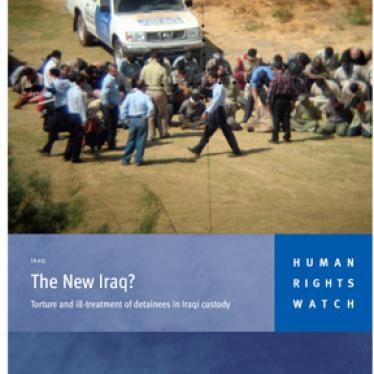Last week, the Wall Street Journal revealed a noteworthy development in the US targeted killing program: a modified Hellfire missile that strikes without exploding, reportedly leaving those close to the target unscathed. The CIA and the US military have used the hitherto secret weapon at least a half-dozen times in recent years to kill terrorism suspects in Iraq, Libya, Somalia, Syria, and Yemen, the Journal reported.
Proponents tout the missile, called the R9X, as a game-changer that can spare more civilian lives than traditional Hellfires. But the new technology can only be as good as the intelligence and the rules that guide it. On its own, the R9X won’t resolve the host of legal issues surrounding the US targeted killing program, which since 2002 has killed thousands of people with scant transparency. Key issues include the definition of a lawful target, the question of which body of international law applies in targeted killings, and the vast disparities between governmental and non-governmental estimates of civilian casualties.
Dubbed the “Flying Ginsu,” after the kitchen knives long hawked on American television, the R9X is armed with a “halo of six long blades” that can pierce through obstacles such as buildings and car roofs before shredding its target, the Journal reported. The impact radius is so limited that the missile can kill a passenger in the front seat of a moving vehicle while sparing the driver, the Journal said. The traditional Hellfire, in contrast, is similarly accurate but its warhead explodes on impact, destroying objects and civilians within several meters.
The R9X, developed under President Barack Obama to reduce civilian casualties, has been used by the CIA and the US military since at least 2017, the Journal reported. Like the traditional Hellfire, the R9X apparently is laser-guided and can be launched from traditional aircraft or from remotely piloted drones. Drones are the US weapon of choice for targeted killings because they can loiter for extensive periods to better distinguish military targets from civilians without risk to human operators, who often are based thousands of miles away.
Not Failsafe
But drones aren’t failsafe. Human rights groups and journalists have documented numerous US drone strikes in Pakistan, Somalia, and Yemen in which those targeted turned out to be a grandmother, farmer, or group of women and children coming home from market rather than fighters from groups like the Taliban, al-Shabab, al-Qaeda and the Islamic State (ISIS). In many cases, the victims were alone in a field or on a remote stretch of road, where the R9X’s smaller kill radius would not make a difference.
While the R9X might help spare civilians in densely populated war zones, including those used as human shields, substantial intelligence would still be required to pinpoint the intended target. Not surprisingly, deployment of the R9X has been rare, the Journal reported, even though a US-led coalition has launched thousands of strikes on ISIS targets in Mosul, Iraq, and Raqqa, Syria, in recent years.
The R9X is being deployed even as the US administration relaxes rules for protecting civilian lives during counterterrorism strikes. In 2013, Obama directed that outside of designated war zones — such as Afghanistan and, subsequently, Syria and Iraq — the US must have “near-certainty” that no civilians will be killed or injured in a strike against a suspected terrorist and that the target poses a threat to American lives.
In December 2016, a month before leaving office, Obama designated swathes of Libya as an “area of active hostilities” where his strict civilian protection rules did not apply. In March 2017, President Donald Trump similarly relaxed the civilian casualty rules for US strikes in Somalia. In Yemen, where in 2002 the US inaugurated its targeted killing program with a lethal strike against an al-Qaeda operative, the US has repeatedly contended that such killings, often far from any conventional battlefield, are lawful under what it controversially considers a war without boundaries against extremist armed groups.
International law permits greater latitude for civilian deaths during armed conflict. Such deaths are considered legally acceptable “collateral damage” if the anticipated military gain from the attack outweighs the expected civilian harm. Outside of armed conflict situations, law enforcement rules bound by international human rights law allow taking human life only when the lives of others are at imminent risk.
Interpretations of Lawful Military Target
Just as the R9X does not on its own change applicable law, it does not resolve the controversy over whether the US is applying an overly expansive interpretation of a lawful military target. Reports persist of the US carrying out so-called “signature strikes,” in which individuals or groups far from any battlefield are targeted based on suspicious patterns of movement or behavior, rather than on specific knowledge of whether the individual is a fighter or poses a threat to the US government or citizens.
The lawfulness of a strike on a Yemeni man killed for wearing a beard, robe, and headscarf, carrying a Kalashnikov, and frequenting an area where al-Qaeda in the Arabian Peninsula operates — a description that applies to many Yemeni men regardless of whether they belong to an armed group — will not be determined by whether he was killed with an R9X.
Nor will the new Hellfire end the ongoing debate over the veracity of civilian casualty figures in US strikes, whether in or out of undisputed war zones such as Afghanistan, Iraq, and Syria. Only in 2016 did Obama direct the US military and the CIA to start releasing civilian and combatant casualty figures for lethal targeting outside of US-declared areas of active hostilities. Obama also curbed counterterrorism strikes by the CIA by concentrating targeted killing authority in the US military, which operates with less secrecy.
But the casualty figures released as a result of the 2016 Obama directive — one set for 2002-2015 and another for 2016 — were dramatically lower than non-governmental tallies. Moreover, the figures were aggregates that lacked details on when or where the deaths occurred, rendering them impervious to meaningful scrutiny.
The Trump administration restored the CIA’s authority to launch drone strikes, and in March it revoked portions of the 2016 order that had directed the CIA to disclose its casualty figures in such operations.
In justifying the partial revocation of Obama’s order, the Trump administration noted that Congress has, since 2018, mandated increasingly detailed Defense Department reporting on civilian casualties during US military operations. But the congressionally mandated figures do not include CIA strikes. Nor do they include casualty figures for combatants or clarify whether and where the US may be conducting lethal targeting outside of declared areas of active hostilities.
Furthermore, the US military figures released in 2018 and 2019 are, like the Obama-era numbers, exponentially lower than those of independent researchers and reporters. For example, the latest US military report on civilian casualties, released May 2, said it had “credible” evidence that 120 civilians were killed during military operations in 2018. Yet combined data from the United Nations and monitoring groups puts last year’s minimum civilian toll at 1,224 — more than 10 times as many.
Absent further clarity over civilian casualties, it will be next to impossible to assess what difference, if any, the R9X will make in saving bystanders.
If used lawfully and ethically, a munition that reduces harm to civilians is a positive development. But in and of itself, the R9X is no magic bullet — or even a magic halo of blades.









